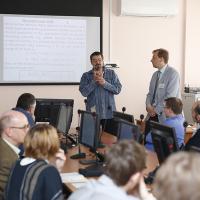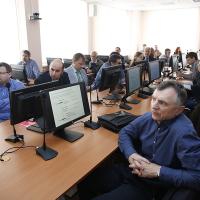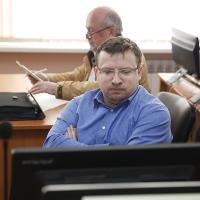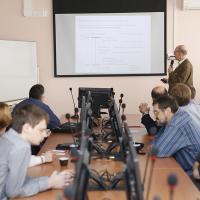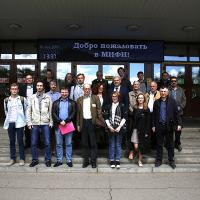
The Institute of Laser and Plasma Technologies (LaPlas) has organized and conducted the 1st International Seminar "Nuclear Frequency Standard: State of the Art" at MEPhI, dedicated to studies of an abnormally low-lying isomeric state in the thorium-229 core and prospects for creating a nuclear standard for time and frequency of a new generation.
The nucleus of the isotope of thorium-229 has recently been of increasing interest to the scientific community, since it is a unique physical object, possessing the only known isomer whose excitation energy of 7.8 ± 0.5 eV is comparable in magnitude both with the energies of optical photons and with the energies of the valence electrons. This circumstance determines the prospects for its application in the development of new devices operating in the VUV range (for example, a laser at a nuclear transition), and also as a benchmark for the standard of time and frequency. The exact characteristics of the isomeric transition in thorium-229, which are necessary for physical applications, are still "terra incognita" for scientists, so research in this area is very promising and interesting.
The seminar was attended by leading scientists, specializing in the field of quantum metrology, laser, nuclear and atomic physics.
The meeting was opened by the Corresponding Member of the Russian Academy of Sciences, Director of the Lebedev (FIAN) Physics Institute Nikolai Kolachevsky.
The main research officer of the All-Russian Research Institute of Physical-Technical and Radiotechnical Measurements (FSUE VNIIFTRI), MEPhI Professor Vitaliy Palchikov made a survey report on the definition of a unit of time and frequency. They noted that at present time advanced research groups in the USA, Germany, Great Britain and Japan are actively working on solving the problems of creating a nuclear standard for time and frequency. In Russia experimental work is carried out so far only on the site of MEPhI (LaPlas Institute) in cooperation with FIAN and FSUE VNIIFTRI. That is why the reports of the employees of the LaPlas Institute aroused great interest among the participants of the seminar.
Researchers from MEPhI presented the results of developing a multi-section linear quadrupole Th3 + ion trap at which the possibility of capture and retention of ~ 103 ions at macroscopic times ~ 30 s was demonstrated. The features of obtaining multiply charged ions by laser ablation and laser cooling of Th3 + ions were discussed.
The Head of the Laboratory of Electron-Nuclear and Molecular Processes. D.V. Skobeltsyna, MEPhI professor, Yevgeny Tkalya, the theorist and founder of the very idea of using nuclei for creating clocks, proposed an original method of excitation of thorium-229 nuclei implanted by pulsed laser implantation into the matrix of a wideband dielectric, while increasing the useful signal to several million photons per second, which is unprecedented to date.
An interesting theoretical work on atomic clocks was reported by Professor Valery Yudin from the Novosibirsk State University. He considered the problem of the influence of a mass defect with respect to optical atomic clocks on ensembles of ultracold ions in a trap, which, as it turned out, can lead to additional frequency shifts of the clock transitions, which must be taken into account in evaluating metrological characteristics.
It is worth noting the overview report of the head of the department of time and frequency of the Braunschweig Physicotechnical Institute, Professor Eckhard Pike. It was about the results of the work of the European consortium "nuClock", supported by the EU in the framework of the FET-project (FET: Future and Emerging Technologies) and aimed at studying the nuclear transition in thorium-229. The consortium includes 8 largest European research partners, such as PTB (Germany), LMU (Germany), University of Juvaskylä (Finland), Max Planck Institute of Nuclear Physics (Germany), University of Vienna (Austria), Max Planck Institute of Quantum Optics (Germany), Company Toptica Photonics. Professor Pike spoke about the new results of the research of European colleagues in the field of laser systems for the spectroscopy of electronic and nuclear transitions of thorium in an ion trap. He also noted a high level of experimental and theoretical work carried out by a group of Russian scientists on the site of NNIU MEPhI.
According to the results of the international seminar, the proposal for its annual holding was unanimously supported.





